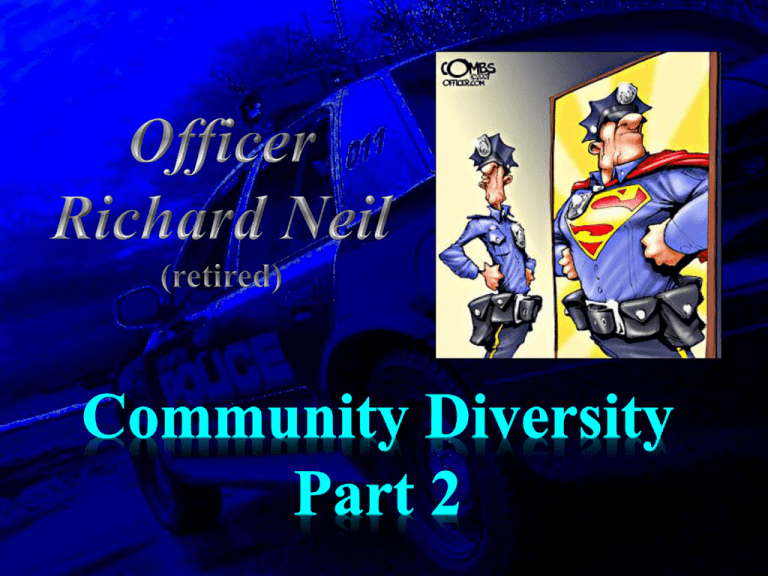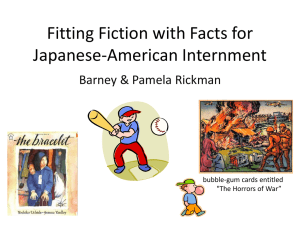
RACE
VALUES
CULTURE
RELIGION
HERITAGE
SEXUAL
ORIENTATION
ETHNICITY
RACE
A local geographic or global human
population, distinguished as a more or less
distinct group by genetically transmitted
physical characteristics
A group of people united or classified
together on the basis of common history,
nationality, or geographic distribution
Henry Louis Gates Jr.
VALUES
Values are the beliefs that dictate how we
see and perceive the world
Values are learned through:
• Family
• Friends
• Church
• Peers
• Television, Radio, Newspapers
• Teachers
CULTURE
The knowledge, beliefs, and behaviors
transmitted from one generation to the
next
Is learned
Defines for us what is right and wrong
Defines the rules of behavior
Influences and shapes our world view
CULTURE
Customary beliefs of a racial,
religious or social group
Social forms of a racial, religious or
social group
Material traits of a racial, religious
or social group
Culture is learned and transmitted
by family
CULTURE
Culture is fluid - constantly changing
yet remains constant
Culture is shared and effectively
defines the boundaries of different
groups
Culture becomes part of the
unconscious so that the
characteristics of the
culture become innate
CULTURE
Because culture is
internalized so that learned
behavior becomes natural
and unconscious,
individuals may:
CULTURE
Respond favorably to behavior that
is as predictable as one’s own
(or)
Respond unfavorably to behavior
that is peculiar or different and
which may be seen as
irresponsible, psychopathic,
inferior or a result of improper
upbringing
AFRICA
RELIGION
Within cultures, there may exist
many different religions.
The values of religion will affect the
perspective from which various
sectors of a given society, race or
population sees their environment
and/or world view
HERITAGE
The characteristics, culture and
traditions handed down from one’s
ancestors
SEXUAL ORIENTATION
This refers to a person’s sexual
identification
A group of people involving all races
and cultures
FOUR COMPONENTS OF
SEXUALITY
Biological Sex: A person’s biological state of
maleness or femaleness determined at birth
Gender Identity: One’s psychological sense
of being male or female
Sexual Orientation: A person’s emotional,
physical and sexual attraction to individuals
of a particular gender
Social Sex Role: One’s adherence to cultural
norms for feminine and masculine behavior
ETHNICITY
Defined: a group of people who
share characteristics such as rituals,
language, nationality, religion, in
other words they share a common
cultural heritage
Identity is a component of ethnicity and a
frequent factor that influences law
enforcement interaction with public
Can include lack of understanding of the
practices of a specific ethnic group that could
lead to undue friction between law enforcement
and the public
Community ethnic diversity is becoming more
common in general and in the ranks of law
enforcement specifically
Officers must be cognizant of ethnic differences
and sensibilities of such when interacting with
the public and law enforcement colleagues
Ethnic misconceptions, jokes, slurs, etc. can be
very disruptive
Takeshi Yoshihara
U.S. Naval Academy Graduate, rose to the
rank of Captain
Not a good candidate; no extra-curriculars
Lived in a single room dwelling covered in tar
paper, along with 7 siblings in Idaho
Was prone to being sea sick and was nearly
kicked out of the program
Commander Joseph Taussig, USS Nevada
Became the first Japanese-American graduate
because he was honest
Japanese American Internment Camps
1942 over 110,000 Japanese Americans
relocated to “War Relocation Camps”
from the west coast.
Only 1,800 of the over 150,000 from Hawaii
were interned.
Of those interned 62% were American
Citizens. About 80,000 were nisei.
1988, President Ronald Reagan signed
legislation which apologized
for the internment on behalf
of the U.S. government.
1905,
California's anti-miscegenation
law outlawed marriages between
Caucasians and “Mongolians”
In October 1906, the San Francisco
Board of Education separated the
Japanese students from the
Caucasian students.
1924 "Oriental Exclusion Law," which
blocked Japanese immigrants from
attaining citizenship in California.
Lieutenant General John L. DeWitt,
who administered the internment
program, repeatedly told
newspapers that "A Jap's a Jap" and
testified to Congress, I don't want
any of them [persons of
Japanese ancestry] here.
They are a dangerous
element.
There is no way to determine their
loyalty... It makes no difference whether
he is an American citizen, he is still a
Japanese. American citizenship does not
necessarily determine loyalty... But we
must worry about the Japanese all the
time until he is wiped off the map.
Austin E. Anson, managing AG secretary "We're charged with wanting to get rid of the
Japs for selfish reasons. We do. It's a
question of whether the white man lives on
the Pacific Coast or the brown men. They
came into this valley to work, and they
stayed to take over... If all the Japs were
removed tomorrow, we had never miss them
in two weeks, because the white farmers can
take over and produce everything the Jap
grows. And we do not want them back when
the war ends, either.”
Los Angeles Times - "A viper is
nonetheless a viper wherever the egg is
hatched... So, a Japanese American born
of Japanese parents, nurtured upon
Japanese traditions, living in a
transplanted Japanese atmosphere...
notwithstanding his nominal brand of
accidental citizenship almost inevitably
and with the rarest exceptions grows up
to be a Japanese, and not an American...
while we are at war with their race. (cont.)
“Thus, while it might cause injustice
to a few to treat them all as potential
enemies, I cannot escape the
conclusion... that such treatment...
should be accorded to
each and all of them
while we are at war
with their race."
Internment of Japanese Americans, who
provided critical agricultural labor on
the West Coast, created a labor
shortage.
Which was exacerbated by the induction
of many American laborers into the
Armed Forces.
This vacuum precipitated
a mass immigration of
Mexican workers known
as the Bracero Program.
After the expiration of the initial
agreement in 1947, the program was
continued in agriculture under a variety
of laws and administrative agreements
until its formal end in 1964.
In the 1930s, during the
Great Depression, over
500,000 Mexican
Americans were
deported or pressured
to leave, during the
Mexican Repatriation.
442nd Regimental Combat Team
Asian American unit composed of mostly
Japanese Americans.
The families of many of its soldiers were
subject to internment.
Famously rescued the "Lost
Battalion“- 800 casualties with
121 dead – to rescue 211.
Fought with uncommon
distinction in Italy, southern
France, and Germany.
442nd Regimental Combat Team
The unit became the most highly decorated
regiment in the history of U.S. Armed
Forces.
U.S. Army battle reports show the official
casualty rate, combining KIA (killed) with
MIA (missing) and WIA (wounded and
removed from action) total was 93%.
“The Purple Heart Battalion”
Members received
18,143 awards
9,486 Purple Hearts for
3,000 soldiers
7 Presidential Unit
Citations (5 earned in
one month)
52 Distinguished Service
Crosses
560 Silver Stars with 28
second awards
22 Legion of Merits
15 Soldier’s Medals
4,000 Bronze Stars with
1,200 second awards
21
Congressional
Medals of Honor
President Harry Truman
“You fought not only the
enemy, but you fought
prejudice – and you have
won.”










